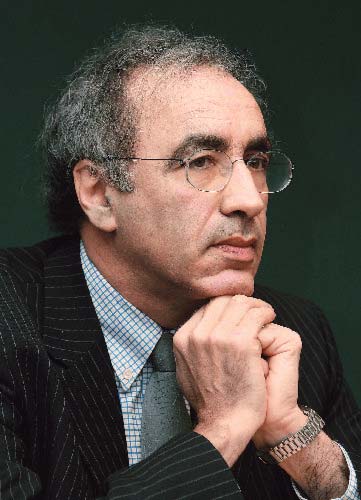青海师范大学中国语言文学一级学科研究生通识课程
“跨文化中国学研究方法论”第九讲
白乐桑教授《法国汉学渊源的文化背景》

主讲教授简介:白乐桑(Joël Bellassen),法国国家东方语言文化大学教授,法国汉学家,国际著名汉语教育家。法国荣誉国民教育汉语总督学,欧洲汉语教学协会主席、法国汉语教学协会主席,世界汉语教学学会副会长。白乐桑教授长期致力于汉语汉字文化教育在法国和其他欧洲国家的推广,做出卓越贡献,获法国政府颁发的学术棕榈司令勋章。白乐桑教授曾于上世纪70年代留学于北京大学哲学系和北京语言学院。现为北京师范大学、北京语言大学、南开大学等中国多所高校聘任的客座教授,出版《汉语语言文字启蒙》、《跨文化汉语教育学》等著作和发表论文百余种。白乐桑教授为中法跨文化交流做出了重大贡献,获中国政府颁发的中国语言文化友谊奖和中华优秀图书特殊贡献奖。
2022年5月7日,青海师范大学中国语言文学一级学科“跨文化中国学研究方法论”研究生课进入第九讲,法国国家东方语言文化大学白乐桑(Joël Bellassen)教授主讲,题目为《法国汉学渊源的文化背景》。青海师范大学文学院、青海师范大学高原科学与可持续发展研究院、北京师范大学跨文化研究院、南京大学、韩国汉阳大学和比利时鲁汶大学的师生近60人线上听讲。青海师范大学文学院副院长刘晓林教授主持本课。
法国汉学史和中文教育史长期居于世界领先地位,引起东西方各国的瞩目。但两者之间存在着怎样的联系?哪些理论遗产可以分享?以及中国高校的人文学科建设能否从中获得有益的启示?这是一连串的问题。它们过去往往被分散地讨论,缺乏关联性的分析和整体研究,白乐桑教授对此开展了系统性的研究。
一、法国汉学史和中文教育史
白乐桑教授认为,欧洲汉学发轫于意大利和西班牙,但成型于法国。自17世纪中叶起,法国的政治、哲学、思想、宗教、历史、诗歌、绘画和小说各界接触到中国文化信息,涌现了很多书籍,谈论汉字、汉语和中国历史。18世纪后期,法国出现首位汉学教授雷慕莎,从此将法国汉学史与中文教育联系在一起。在这一过程中,中国的康熙皇帝和法国的路易十四太阳王,法国的耶稣会士和中国的基督教家庭子弟、法国的国王数学家、医药学家、哲学家、文学家和艺术家等,都为之做出了贡献,伏尔泰和雨果还成为家喻户晓的历史人物。20世纪以来,戴密微和汪德迈创造了“了解他者”的汉学,为法国汉学增添了新财富。
白乐桑教授的深刻之处,见于他对“东方主义”和系列概念的新阐释,并由此揭示法国汉学与法国中文教育联袂的深层背景。当时在法国,所谓“东方”,指中国、伊斯兰文明和非洲。白教授说,“东方主义”思潮在欧洲浪漫主义和启蒙思想运动中产生,孕育出两大“交汇点”:一是诗歌、文学、书法、绘画与中国传统文化的交汇点,一是哲学与汉语的交汇点。一批概念发生悄然变化,如“东方”、 “东方学”、“亚洲学”、“语言”、“语法”、“词典”、“知识”和“学科”等。在这些变化中,人们对汉学或中国学的概念一步步形成。
二、法国中文教育理论遗产
意大利汉学家路易萨曾在第二讲中提到意大利汉学三关:想象的汉学、宗教的汉学和科学的汉学,三者都有中文教育。白乐桑认为,法国中文教育的特征是与宗教无关,而具有自己的特点:理性思维,多语种,视野开阔,对中国各门学问都感兴趣,而非局限于中国传统文化。早期来华传教士都是学者,有自己的专业,涉猎文理科, 可以用科学方法从事研究辅以翻译与教学。雷慕莎创建了理性汉学与理性中文教育,由他开始,法国汉学界设立了中文讲席、法兰西公学讲坛,组织编纂汉语教材,编辑中法拉丁三语词典,开设大学汉语课程。经过近三个世纪的发展,法国的中文教育积累了丰厚的遗产。
三、中文教育学科建设
(一)学科史。学科史是一个学术命题。学术史的范畴,包括学科知识论、知识诊断论、知识形态,学科的形成史和学科发展模式论等。研究学科史的方法,不应该是进化论的,而应该看到它的非连续性,乃至有断层或裂变。福珂(Michel Foucault)是这一领域的鼻祖。巴什拉(Barchelard) 从障碍的角度提出科学的认识论。合格的中文教师需要具备学科史知识,了解学科传统,研究教育模式。
(二)学科组织。法国有两个:法国汉学协会(AFEC)和法国汉语教学协会(AFPC)。
(三)国民教学体系。法国政府将中文教育纳入国民基础教育体系,列入其他外语项目,发行《欧洲语言通用参考框架》。
(四)标志性成果。迄今为止,法国创立了第一个汉学教席(1814)、第一个中文系(1843),第一所开设中文课程的中学(1958),法国教育部首次开展汉语专业师资认证会考(CAPES,1966),法国高考纳入中文考试(1968),完成《大利氏》这部最大的汉语双语词典(2001),制定第一套完整的汉语教学大纲(2002),设置第一任国民教育汉语总督学(2006)。
白乐桑教授操一口标准流利的汉语,熟练地运用中文PPT,全面阐释研究观点,使这堂课别开生面而气氛热烈,全体师生兴趣盎然地跟他走进一个跨文化的法国中文教育世界。青海师范大学文学院副院长刘晓林教授与青海师范大学文学院院长暨北师大民俗典籍文字研究中心原主任李国英教授都与白乐桑教授进行了学术交流。他们指出,白教授提供了一部创新性的法国中文教育史,同时为青海师大人文学科建设提供了宝贵的“他山之石”。他们真诚地邀请白乐桑教授在适当的时候来青海师大治学执教,为开辟国际中文教育与文化多样性结合的新方向而共同努力。

白乐桑教授《法国汉学渊源的文化背景》的授课现场(2022年5月7日)
Postgraduate General Course of the First-Level Discipline
Chinese Language and Literature of Qinghai Normal University
“Methodology of Transcultural Study on Chinese Society and Culture”
Invites Professor Joël Bellassen As a French Sinologist to Deliver the Lecture
“On Cultural Background of Chinese Teaching and Research in France”
On May 7th, 2022, the ninth lecture of “Methodology of Transcultural Study on Chinese Society and Culture”, postgraduate general course of the first-level discipline Chinese Language and Literature of Qinghai Normal University, was delivered by a famous French Sinologist, Professor Joël Bellassen from National Institute for Oriental Languages and Civilizations, Paris online. The title of his lecture was “On Cultural Background of Chinese Teaching and Research in France”.
The history of Chinese teaching and research in France have long been in the leading position in the world since middle time of 17th century, attracting the attention of the East and the West. Anyway, What is the conjunction of the research for China and Chinese teaching? What theoretical heritage can be shared? Can the construction of humanities in Chinese universities get beneficial enlightenment from it? Many questions such as them used to be discussed in different ways, lacking correlation analyses and integral studies, whereas Professor Joël Bellassen has carried out this research systematically based on his huge practices.
I. The History of Chinese teaching and research in France
Professor Joël Bellassen believes that Chinese Studies in European originated in Italy and Spain, but shaped by France. Since the mid-17th century, at the fields of French politics, philosophy, thought, religion, history, poetry, painting and fiction have been exposed to Chinese culture, and some books have emerged on Chinese characters, Chinese language and Chinese history.
In the late 18th century, the first Professor of Chinese teaching and research in the Institute of France, Professor Jean Pierre Abel Rémusat, linked the history of the research for China with the history of Chinese teaching in France. In this process, the Emperor Kangxi in Qing dynasty of China, the Sun King Louis XIV of France, the Jesuits of France, the offspring of Christian families in China, the French mathematicians, medical scientists, philosophers, writers and artists, all made their contributions to it. Voltaire and Hugo also became well-known historical figures. Since the 20th century, Professor Paul Demiéville and Professor Léon Vandermeersch have established “understanding the other” in Chinese studies, adding new wealth to the academic accumulation of Chinese studies in France.
The depth of the research by Professor Bellassen lies in his new interpretation of “Orientalism” and a series of concepts, revealing the in-depth background of Chinese teaching and research in France. At that time, “the Orient” denoted China, Islamic civilization and Africa in France, according to Professor Bellassen, “Orientalism” emerged in European Romanticism and Enlightenment movements, giving birth to two “intersections”. One is the intersection of poetry, literature, calligraphy, painting and traditional Chinese culture. The other is the intersection of philosophy and Chinese characters and language. A number of concepts have quietly changed, such as “the Orient”, “Orientalism”, “Asian Studies”, “mother tongue ”, “grammar”, “dictionary”, “knowledge” and “discipline”. In these changes, the concept of research for China or Sinology has been gradually formed.
II. The Theoretical heritage of Chinese Teaching in France
According to Professor Joël Bellassen, Chinese teaching in France has little connection with religion, but has its own characteristics: rational thinking, multilingualism and broad vision, and interest in research. It is interested in a variety of directions ,not confined to traditional Chinese culture. Early missionaries in China from France were mostly scholars with their own specialties, majoring in liberal arts, science and technology, could conduct research with scientific methods supplemented by French and Chinese bilingual translation and teaching. Since Professor Jean Pierre Abel Rémusat established the rational Chinese research as well as rational Chinese teaching as a pioneer who was followed by many talents from generation to generation. After nearly three centuries of development, French academic circle has accumulated a rich heritage of it and appeared a new trend of Chinese education.
III. Construction of Discipline of Chinese Education
(1) Disciplinary History. Disciplinary history is an academic proposition. The category of academic history includes disciplinary knowledge theory, knowledge diagnosis theory, knowledge form, discipline formation history, discipline development mode theory, etc. The method of studying disciplinary history should not be evolutionary, but its discontinuity, or even a fault or fission should be noticed. Michel Foucault is the originator of this field. Barchelard presents scientific epistemology from the perspective of obstacles. Qualified Chinese teachers are supposed to have disciplinary history knowledge, understand disciplinary traditions, and study education models.
(2) Discipline Organization. There are two discipline organizations in France, namely, Association francaises d’Etudes chinoises (AFEC) and Association Française des Professeurs de Chinois (AFPC).
(3) Chinese Teaching System at National level. French government has incorporated Chinese education into the national basic education system, listed it in the national projects of foreign language teaching, and issued Cadreeuropéen commun de référence pour les langues.
(4) Representative Achievements. France established the first teaching post of Chinese Studies (1814), the first Chinese department (1843), the first middle school were started the Chinese course (1958), conducted “Certificat d’Aptitude Pédagogique à l’Enseignement Secondaire”by French Ministry of Education for the first time (CAPES, 1966), set up Chinese examination in French college entrance examination(1968), completed a largest bilingual dictionary Le Grand Ricci (2001), developed the first complete Chinese teaching syllabus (2002), and set up the first position as a chief inspector for Chinese education in the Education Ministry of France (2006).
(Trans. by Li Huafang)
